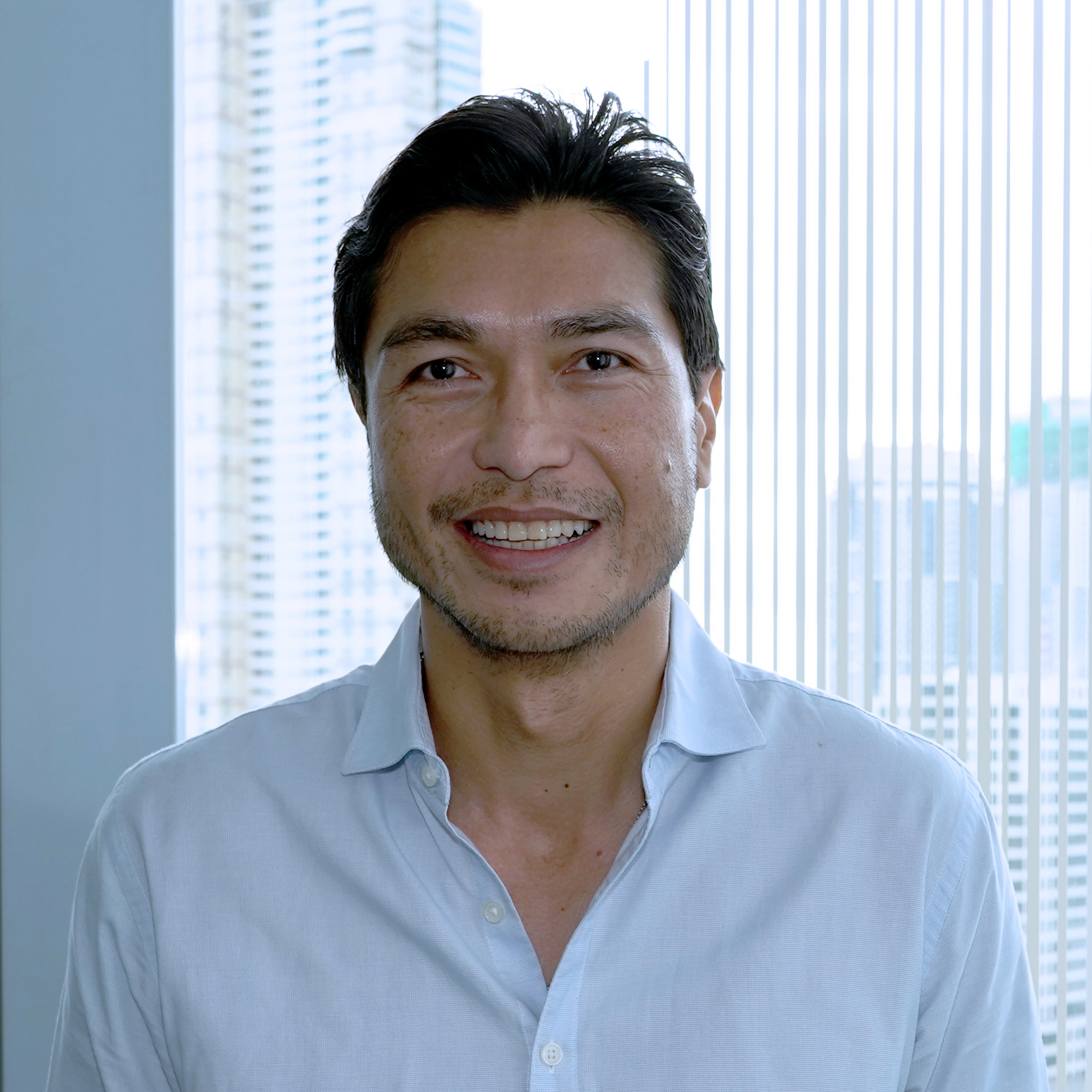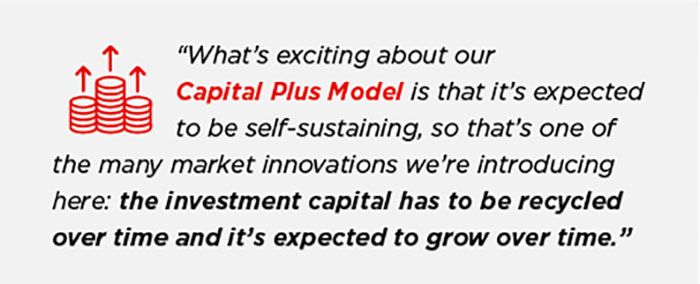Discussing Blended Finance: From Gender Lens Investing to Global Health


Impact investing—investment capital deliberately used to achieve social, and environmental outcomes alongside financial returns—can be a powerful tool to complement traditional development assistance and philanthropy. Strategically applied, this dual purpose of capital can strengthen sectors and markets where investors perceive high risks, which, of course, are often those most in need of financing. In this interview, one of Abt’s private sector health experts, April Warren, sat down with two of Abt’s impact investing experts—James Soukamneuth, Impact Investing Director, and Prachi Maheshwari, Impacting Investing Deputy Director—to discuss how blended finance structures can be used to mobilize private capital in frontier markets, and where similar approaches can be applied to advance global health goals.
Blended finance has become a buzz word in global development—what do we really mean by it?
Prachi: Blended financing is pooling of concessional capital – philanthropic and public sources – to catalyze private sector investments in otherwise high risk impact sectors or markets. For example, in the health sector you may have come across USAID’s development credit authority (DCA) guarantees, which underwrite the risk of loan default for private banks, in an effort to mobilize their commercial capital for health. So it’s about capital, but also about knowledge transfer from private sector and, most importantly, to promote sustainable capital for development outcomes at scale.
Why do we need blended finance in global development?
James: A lot of the work we do in development aligns with the UN’s Sustainable Development Goals (SDGs), which has a staggering $2.5 trillion annual financing gap. However this figure is derived, you can’t argue with the scale of the problem. To give you a sense of what it takes to close that funding shortfall, foreign assistance provides about $180 billion annually as per OECD [Organisation for Economic Co-operation and Development] data, so other sources are needed to address the financial shortfall to achieve the SDGs.
During my time in the development field, donors and implementers have always lamented constrained budget environments and the need to do more with less, maximizing scarce development resources. Capital markets run into the trillions of dollars and provide a natural source to complement development finance, to the extent the right balance can be struck between competing interests on investment returns that advance broader societal objectives. To achieve the SDGs, we require other sources of financing, so leveraging private sector capital through blended finance, if properly structured while minimizing market distortions, has the potential to narrow this financing gap.
Prachi: What we’re doing with blended finance is “derisking.” When commercial investors invest in low- and middle-income countries, there are all these country level risks, inefficiencies in financial markets, subpar legal and regulatory frameworks that increase an investor’s risk. Further, many investors do not have a deep context knowledge, for example – gender dynamics or healthcare practices in frontier markets, and perceive businesses in these spaces as high risk. These are the kinds of risks we’re trying to help markets overcome while increasing the flow of capital for SDGs.

So, what blended finance mechanisms can be used to reduce risk and encourage investment from private sector investors?
Prachi: One needs to examine the maturity of the local financial market, understand the factors behind the market failure, and define the market outcome expected – before selecting a blended finance instrument. A whole range of blended finance mechanisms – from direct interventions using grants, debt and equity at concessional rates to supporting mechanisms such as technical assistance and market incentives to improve the investment viability – can be deployed to attract private sector investors
James: To share more specific examples, we are implementing Investing in Women – an Australian government initiative in Southeast Asia. Our objective is to increase impact investments in women-owned and women-led SMEs, an under-served market segment. When we began implementing in mid-2016, there were no women SME-focused impact funds in the region. The financing gap for women’s SMEs exceeds some $70 billion in the Asia Pacific, and in venture capital, female-founded companies receive a paltry 2 percent of available investments. By some estimates, the financing gap for women’s SMEs has only increased, as a consequence of COVID-19.
To address this challenge, we intervene directly in the market, injecting catalytic grant capital to spur more private sector interest over time. We’ve so far seeded 10 different blended finance vehicles in Southeast Asia through various investing partners (or fund managers), each of which has unique characteristics depending on specific market conditions and catalytic role of our funding. For example, we have anchored numerous investment funds and provided first loss capital for non-bank financial institutions. For some investing partners, we’ve also developed “sidecars”—that allow our investing partners to make debt or equity investments in women’s SMEs on a 1:1 matching basis with our funding.
That’s really exciting – so as you know, COVID-19 has exerted enormous pressures on health systems around the globe, including significant financial stresses on healthcare businesses. How could blended finance help?
Prachi: Be it private healthcare infrastructure for COVID-19 response or vaccine development and production – private sector has played a central role during this pandemic. So while the pandemic has uncovered a lot of issues in our healthcare systems it has also strengthened the case for the role of private sector in healthcare delivery. As per WHO estimates, the annual investment gap for reaching the health SDGs in low- and middle-income countries now stands at over $300 billion, so definitely there is a huge play for blended finance to unlock the private sector for health systems recovery and resilience.
There are lots of opportunities to use blended finance in health: to catalyze research and development of health technologies, to scale private sector healthcare infrastructure, to increase production of and access to pharmaceuticals, and even to deepen universal healthcare and target prevalent market inequities. Blended finance can also be used to target specific issues; for example, the GAVI vaccine alliance used an advanced market commitment, a blended finance approach, to increase access to affordable vaccines in lower-income markets. At systems level, catalytic investments into sector specific funds investing in healthcare SMEs and impact enterprises need to be explored.
James: Blended finance provides a development tool to open more sectors of the economy to commercial players. Access to basic healthcare has traditionally been viewed as a public good, but more and more there’s a place for private sector players to complement public health systems. No where is this approach more urgent than in the COVID-19 context, where many developing countries require private sector or donor support to scale mass vaccinations that are available in higher income countries. There is a huge role for private sector businesses to expand health access, not as a substitute for public service delivery but as a complement, if the business case can be made. Blended finance can help investors explore opportunities for healthcare investments in frontier markets.

Are you already using blended financing to encourage private investment in healthcare?
Prachi: Some of the women’s SMEs in our portfolio of 10 funds are operating in healthcare. For example, Investing In Women seeded an impact fund with Capital for Development (C4D) Partners that provided hybrid debt of $112K to BUPHARCO, a pharmacy chain in the Philippines. Together with the technical support that C4D provided, this enabled BUPHARCO to expand its operations to underserved areas, increase customer awareness on the availability and quality of their health products, and raise US$ 310k in additional co-investments.
Through Investing in Women, we also launched a COVID Response Facility that also attracted capital from Macquarie Foundation. First of its kind, this blended finance facility provided an Emergency Investment Facility for our portfolio fund companies and a Resilience Facility to increase overall liquidity for women’s SMEs in the region. Through this fund, our partners extended capital to several healthcare SMEs, including a hospital chain in Vietnam that focused on maternal health care, which is a critical service, COVID or no COVID.
In global health, there still seem to be a small number of isolated, blended finance deals out there. What have you learned about how to create change at the market, or systems level?
James: Capital is a necessary but insufficient condition to grow enterprises that produce impact at scale. At Investing in Women, our blended finance approach is a “capital plus” model, where we provide catalytic investments, supplemented with gender lens advisory and operational grants to strengthen capacity to invest with a gender lens. We also provide technical assistance grants for the investing partners to support their new investees to take full advantage of the growth capital provided.
At the core of our approach is the urgency to move capital, so we use performance-based incentives around targets for private sector leverage. Impact investing is starved for capital and mostly fragmented, and gender lens investing is even more so. Where many donor programs in impact investing focus on conventional investment readiness of entrepreneurs and strengthening weak ecosystems, we’re injecting much needed capital into the system through blended finance instruments. Thus far, our investing partners have made 38 investments in the range of $100k to $ 1 million, with private sector leverage in excess of 5x. Counting public co-investments into these deals and follow-on investment funds, our blended finance work has mobilized well over $ 200 million. This allows the women’s SMEs we support to reach numerous beneficiaries (with forward and backward linkages in the economy) across diverse sectors, such as healthcare, agribusiness, educational training and e-learning, fintech, logistics, and artificial intelligence.

For investing partners with whom we establish blended finance structures, income or proceeds made with our investment must be recycled for the purpose of the grant funding which, in this case, is to catalyze investments for women’s SMEs in Southeast Asia. Once returns from these blended finance structures materialize, the proceeds are redeployed for continuing investment purposes, ideally growing the initial capital allocation over time. In consultation with our Australian government client, we are working with the investing partners on exit strategies for the use of funding proceeds, long after the life of our program. What’s exciting about our Capital Plus Model is that it’s expected to be self-sustaining, so that’s one of the many market innovations we’re introducing here: the investment capital has to be recycled over time and it’s expected to grow over time. With the 10 funds that we have and the $20 million that’s being recycled, that should keep these investments going even after our program winds down.
Any final thoughts for those looking to use blended finance to accelerate their impact?
Prachi: It is important to take a long-term view, and to take into account the systems change that you are trying to create in the market through your blended finance intervention instead of only chasing immediate private capital. Private capital attracted is often measured by the leverage ratio: the amount of commercial capital attracted by the use of concessional capital. These ratios can vary significantly across sectors, target segment and geography, and with the impact outcomes one is targeting. Higher the risk, lower the immediate leverage – at least at the transaction level.
When we started in 2016 in South East Asia, there was hardly any interest in investing in women-owned SMEs, so in our initial transactions, our leverage was negligible: there were almost no commercial investments in the initial Gender Lens funds that we seeded. After 5 years, the leverage ratios have consistently increased (we are over 5x in 2021) with our portfolio funds and companies raising subsequent funds from private capital markets. We are expecting that in another 5 year term, the women SME’s risk-return profile will be perceived on par with a typical SME.

James: Doing blended finance is not for the faint of heart; specialized expertise is needed but it’s not a black box that should scare people off. For those looking to do blended finance there are a few key things to consider if you want to drive development outcomes and not inappropriately subsidize the private sector:
- Would this investment have happened without concessional funding to achieve the desired development outcomes?
- Are you entering markets that investors aren’t entering on their own commercial accord?
- Philanthropic funding should be testing new or early stage ideas or approaches to support development objectives.
- Blended financing has to serve a catalytic purpose, mobilizing other private sector resources.
- Will the investing activity produce strong and lasting development outcomes?
- Finally, over time, concessions to the private sector have to decrease as perceptions of market risk reduce.
We recognize that there’s a fine line between blended finance and corporate welfare – as with any private sector engagement. And that’s something we have to be mindful of. Development finance is a scarce and precious resource, that should be optimized to unlock commercial finance directed towards development outcomes.
Having worked across the public and private sectors, I’m super excited by opportunities created by blended finance and impact investing. Market-based approaches, corporate resources, and cutting-edge business practices together provide added toolkits to help address pressing global concerns. And, while it’s important that we remember that blended finance is not a panacea—there will always be a role for conventional donor, grant-based funding and government aid to those most in need—a larger role for the private sector promises an entrepreneurial spirit of innovation, measured risk-taking, and fresh perspectives.
